Blog
Items filtered by date: July 2025
Recognizing Symptoms of Ingrown Toenails
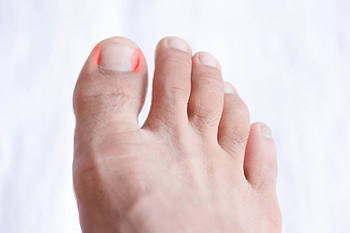
Ingrown toenails can cause significant discomfort, if left untreated. This condition develops when the edge of the toenail grows into the surrounding skin. People often notice redness and swelling surrounding the nail, along with tenderness when pressure is applied. Pain typically worsens when wearing shoes or walking for long periods of time. As the condition progresses, the skin near the nail may become warm and develop drainage or signs of infection. Some people may see pus or feel throbbing pain, especially if bacteria enters the area. The skin may also appear hardened or overgrown along the nail edge. Recognizing these symptoms early can help prevent more serious complications, including deeper infection or abscess. If you notice signs of an ingrown toenail, it is suggested you schedule an appointment with a podiatrist for proper care and appropriate treatment.
Ingrown toenails can become painful if they are not treated properly. For more information about ingrown toenails, contact Christian Smith, DPM of UTOEpia Foot and Ankle Specialist. Our doctor can provide the care you need to keep you pain-free and on your feet.
Ingrown Toenails
Ingrown toenails occur when a toenail grows sideways into the bed of the nail, causing pain, swelling, and possibly infection.
Causes
- Bacterial infections
- Improper nail cutting such as cutting it too short or not straight across
- Trauma to the toe, such as stubbing, which causes the nail to grow back irregularly
- Ill-fitting shoes that bunch the toes too close together
- Genetic predisposition
Prevention
Because ingrown toenails are not something found outside of shoe-wearing cultures, going barefoot as often as possible will decrease the likeliness of developing ingrown toenails. Wearing proper fitting shoes and using proper cutting techniques will also help decrease your risk of developing ingrown toenails.
Treatment
Ingrown toenails are a very treatable foot condition. In minor cases, soaking the affected area in salt or antibacterial soaps will not only help with the ingrown nail itself, but also help prevent any infections from occurring. In more severe cases, surgery is an option. In either case, speaking to your podiatrist about this condition will help you get a better understanding of specific treatment options that are right for you.
If you have any questions, please feel free to contact our office located in Memphis, TN . We offer the newest diagnostic and treatment technologies for all your foot care needs.
Custom Orthotics Offer Relief for Heel Pain
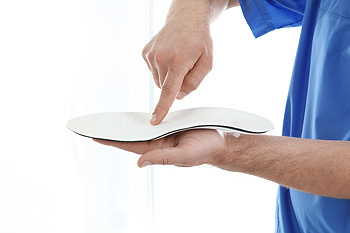
Heel pain can make daily movement difficult, especially during long periods of standing or walking. Custom orthotics are often an effective option for addressing this discomfort by providing support where it is most needed. These devices are designed to fit the exact shape of your foot, helping to distribute pressure more evenly and reduce strain on the heel. For conditions like plantar fasciitis or heel spurs, orthotics can cushion the impact with each step and promote better alignment of the foot. Over time, this support can lead to noticeable relief and improved function. Each pair is tailored to the individual, which increases the chances of long-term success. If heel pain is affecting your daily activities or not improving with basic care, it is suggested that you see a podiatrist for a proper diagnosis and appropriate treatment.
If you are experiencing discomfort in your feet and would like to try custom orthotics, contact Christian Smith, DPM from UTOEpia Foot and Ankle Specialist. Our doctor can provide the care you need to keep you pain-free and on your feet.
What Are Custom Orthotics?
Custom orthotics are inserts you can place into your shoes to help with a variety of foot problems such as flat feet or foot pain. Orthotics provide relief and comfort for minor foot and heel pain.
Over-the-Counter Inserts
Shoe inserts come in a wide variety and are used to treat foot pain, heel pain, and minor problems. For example, arch supports can be inserted into your shoes to help correct overarched or flat feet, while gel insoles are often used because they provide comfort and relief from foot and heel pain by alleviating pressure.
Prescription Orthotics
If over-the-counter inserts don’t work for you or if you have a more severe foot concern, it is possible to have your podiatrist prescribe custom orthotics. These high-quality, custom inserts are designed to treat problems such as abnormal motion, plantar fasciitis, and severe forms of heel pain. They can even be used to help patients suffering from diabetes by treating foot ulcers and painful calluses and are usually molded to your feet individually, which allows them to provide full support and comfort.
If you're experiencing minor to severe foot or heel pain, it’s recommended to speak with your podiatrist about the possibility of using custom orthotics or shoe inserts. A podiatrist can determine which type of custom orthotic or shoe insert is right for you and help you take the first steps toward being pain-free.
If you have any questions, please feel free to contact our office located in Memphis, TN . We offer the newest diagnostic and treatment technologies for all your foot care needs.
What Is a Podiatrist and How Can They Help Your Feet?
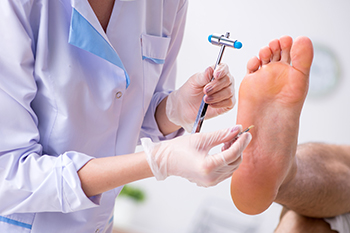
A podiatrist is a medical specialist focused on diagnosing and treating conditions of the feet, ankles, and lower legs. They care for a wide range of issues, including heel pain, bunions, ingrown toenails, flat feet, arthritis, wounds, and sports injuries. Podiatrists also play an important role in managing chronic conditions like diabetes that can affect foot health. They provide treatments, such as custom orthotics, minor surgical procedures, and preventive care, to keep patients mobile and pain free. Whether you have persistent foot discomfort or have sustained a sudden injury, it is suggested that you consult a podiatrist who can treat various foot conditions, restoring comfort and function to everyday life.
If you are experiencing pain in the feet or ankles, don’t join the stubborn majority refusing treatment. Feel free to contact Christian Smith, DPM from UTOEpia Foot and Ankle Specialist. Our doctor can provide the care you need to keep you pain-free and on your feet.
What Is a Podiatrist?
Someone would seek the care of a podiatrist if they have suffered a foot injury or have common foot ailments such as heal spurs, bunions, arch problems, deformities, ingrown toenails, corns, foot and ankle problems, etc.
Podiatric Treatment
A podiatrist will treat the problematic areas of the feet, ankle or lower leg by prescribing the following:
- Physical therapy
- Drugs
- Orthotic inserts or soles
- Surgery on lower extremity fractures
A common podiatric procedure a podiatrist will use is a scanner or force plate which will allow the podiatrist to know the designs of orthotics. Patients are then told to follow a series of tasks to complete the treatment. The computer will scan the foot a see which areas show weight distribution and pressure points. The podiatrist will read the analysis and then determine which treatment plans are available.
If you have any questions, please feel free to contact our office located in Memphis, TN . We offer the newest diagnostic and treatment technologies for all your foot care needs.
When Toes Cross or Overlap in Adults and Infants
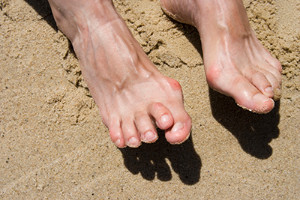
Toes that rest on top of or press against each other can be seen in both newborns and adults. In infants, this may be due to how the baby was positioned during pregnancy. The condition often improves with time or may respond well to gentle stretching or taping. In adults, overlapping toes often develop from long-term pressure caused by wearing tight shoes, poor foot mechanics, or changes in the muscles and tendons. This can lead to discomfort, rubbing, or visible changes in the shape of the foot. Non-surgical solutions such as roomier footwear, padding, or toe separators are often helpful in mild cases. For more severe overlap or persistent pain, surgical correction may be considered. If you or your child is experiencing discomfort due to overlapping toes, it is suggested that you see a podiatrist to discuss the best approach for relief and care.
Hammertoe
Hammertoes can be a painful condition to live with. For more information, contact Christian Smith, DPM from UTOEpia Foot and Ankle Specialist. Our doctor will answer any of your foot- and ankle-related questions.
Hammertoe is a foot deformity that affects the joints of the second, third, fourth, or fifth toes of your feet. It is a painful foot condition in which these toes curl and arch up, which can often lead to pain when wearing footwear.
Symptoms
- Pain in the affected toes
- Development of corns or calluses due to friction
- Inflammation
- Redness
- Contracture of the toes
Causes
Genetics – People who are genetically predisposed to hammertoe are often more susceptible
Arthritis – Because arthritis affects the joints in your toes, further deformities stemming from arthritis can occur
Trauma – Direct trauma to the toes could potentially lead to hammertoe
Ill-fitting shoes – Undue pressure on the front of the toes from ill-fitting shoes can potentially lead to the development of hammertoe
Treatment
Orthotics – Custom made inserts can be used to help relieve pressure placed on the toes and therefore relieve some of the pain associated with it
Medications – Oral medications such as anti-inflammatories or NSAIDs could be used to treat the pain and inflammation hammertoes causes. Injections of corticosteroids are also sometimes used
Surgery – In more severe cases where the hammertoes have become more rigid, foot surgery is a potential option
If you have any questions, please feel free to contact our office located in Memphis, TN . We offer the newest diagnostic and treatment technologies for all your foot care needs.
Soccer Footwear And Its Impact On Injuries
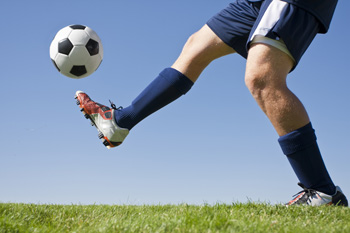
Modern soccer shoes are designed to enhance performance through lightweight materials and close-fitting construction. However, these same features may increase the risk of foot and ankle injuries. Thin soles and limited cushioning can lead to stress-related conditions, while narrow toe boxes may cause irritation or pressure on the forefoot. Playing on artificial turf in cleats that do not provide enough traction or support can also contribute to joint or muscle strain. Improvements in design may include better shock absorption, more anatomical shaping, and options that accommodate different foot types. Balancing agility with protection remains a challenge for manufacturers, but updated designs could reduce the occurrence of common foot injuries seen in soccer players. If you have foot or ankle pain related to sports activity, it is suggested that you see a podiatrist for a diagnosis and appropriate treatment.
Ankle and foot injuries are common among athletes and in many sports. They can be caused by several problems and may be potentially serious. If you are feeling pain or think you were injured in a sporting event or when exercising, consult with Christian Smith, DPM from UTOEpia Foot and Ankle Specialist. Our doctor will assess your condition and provide you with quality foot and ankle treatment.
Common Injuries
The most common injuries that occur in sporting activities include:
- Achilles Tendonitis
- Achilles Tendon Rupture
- Ankle Sprains
- Broken Foot
- Plantar Fasciitis
- Stress Fractures
- Turf Toe
Symptoms
Symptoms vary depending upon the injury and in some cases, there may be no symptoms at all. However, in most cases, some form of symptom is experienced. Pain, aching, burning, bruising, tenderness, tightness or stiffness, sensation loss, difficulty moving, and swelling are the most common symptoms.
Treatment
Just as symptoms vary depending upon the injury, so do treatment options. A common treatment method is known as the RICE method. This method involves rest, applying ice, compression and elevating the afflicted foot or ankle. If the injury appears to be more serious, surgery might be required, such as arthroscopic or reconstructive surgery. Lastly, rehabilitation or therapy might be needed to gain full functionality in the afflicted area. Any discomfort experienced by an athlete must be evaluated by a licensed, reputable medical professional.
If you have any questions please contact our office located in Memphis, TN . We offer the newest diagnostic and treatment technologies for all your foot and ankle needs.
How Podiatric Biomechanics Relates to Gait Problems

Podiatric biomechanics is the study of how the structure and function of the feet affect movement. It looks at how bones, muscles, tendons, and joints all work together to support walking, standing, and balance. When one part of the foot is misaligned or not working correctly, it can affect the way a person moves, leading to discomfort or inefficiency. Certain gait issues, such as overpronation or limping, are often tied to poor foot function. These problems may place extra stress on the ankles, knees, hips, or back. By understanding the mechanics of walking and how the feet interact with the ground, podiatrists can identify the root of dysfunction. Treatment may include custom orthotics, targeted exercises, or footwear changes. If your walking pattern feels off or you have recurring pain when moving, it is suggested that you meet with a podiatrist to explore possible causes and solutions.
If you have any concerns about your feet, contact Christian Smith, DPM from UTOEpia Foot and Ankle Specialist. Our doctor can provide the care you need to keep you pain-free and on your feet.
Biomechanics in Podiatry
Podiatric biomechanics is a particular sector of specialty podiatry with licensed practitioners who are trained to diagnose and treat conditions affecting the foot, ankle and lower leg. Biomechanics deals with the forces that act against the body, causing an interference with the biological structures. It focuses on the movement of the ankle, the foot and the forces that interact with them.
A History of Biomechanics
- Biomechanics dates back to the BC era in Egypt where evidence of professional foot care has been recorded.
- In 1974, biomechanics gained a higher profile from the studies of Merton Root, who claimed that by changing or controlling the forces between the ankle and the foot, corrections or conditions could be implemented to gain strength and coordination in the area.
Modern technological improvements are based on past theories and therapeutic processes that provide a better understanding of podiatric concepts for biomechanics. Computers can provide accurate information about the forces and patterns of the feet and lower legs.
Understanding biomechanics of the feet can help improve and eliminate pain, stopping further stress to the foot.
If you have any questions please feel free to contact our office located in Memphis, TN . We offer the newest diagnostic and treatment technologies for all your foot and ankle needs.
